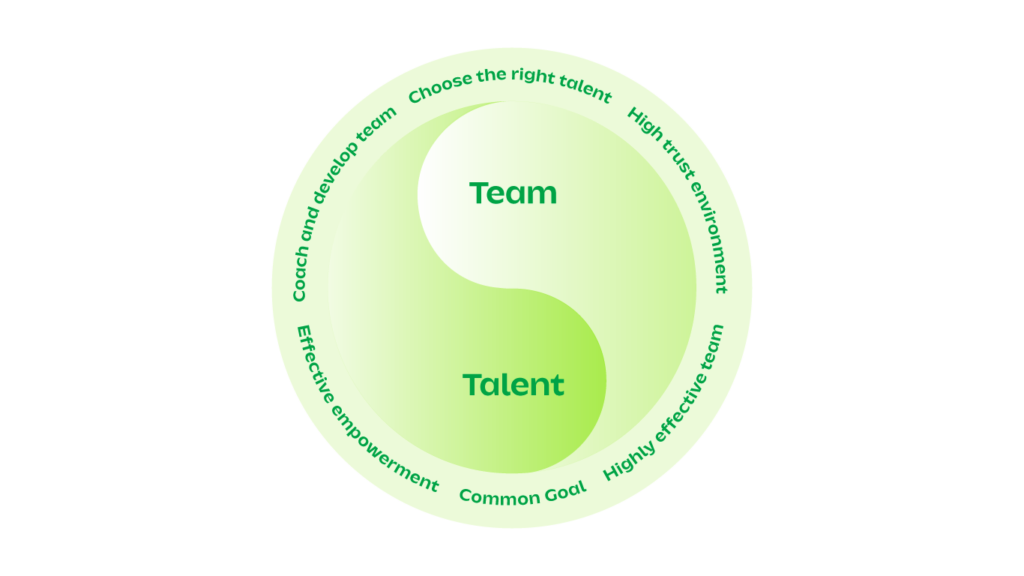
Sammy Lee’s Autopilot Leadership Model™
Leadership and management are often conflated, but they serve fundamentally different purposes in organizations. While management emphasizes control and problem-solving, leadership inspires motivation, innovation, and growth. Sammy Lee, inspired by Lao Zi’s Dao de Jing, has developed the Autopilot Leadership Model, a transformative framework that redefines leadership and empowers teams to operate with autonomy and excellence. This article explores the six core elements of the model and how it distinguishes leadership from management.
Management vs. leadership
Harvard Business School Professor John Kotter famously stated, “Management provides control and solves problems. Leadership provides motivation.” This distinction underpins the Autopilot Leadership Model. Management is about systems, processes, and maintaining order. Leadership, by contrast, is about inspiring people to achieve a shared vision, fostering creativity, and enabling teams to perform at their best.
Sammy Lee’s Autopilot Leadership Model focuses on leadership, not management. It’s about cultivating an environment where teams are self-operational, optimizing performance, employee satisfaction, and innovation. This approach shifts leaders from micromanagers to visionaries who empower their teams to thrive.

The six elements of the Autopilot Leadership Model™
- Choosing the right talent
The foundation of a high-performing team lies in selecting the right individuals. Talent recruitment is not just about finding qualified candidates but ensuring that their strengths, values, and aspirations align with the organization’s vision. When the right people are in place, teams are equipped with the potential to achieve extraordinary results. - High-trust environment
Trust is the ecosystem that nurtures talent. In a high-trust environment, employees feel valued, respected, and empowered to take initiative. Without trust, collaboration falters, innovation stagnates, and productivity declines. Leaders must cultivate trust through transparency, integrity, and support. - Highly effective teams
No individual is perfect, but a well-composed team can be. The Autopilot Leadership Model emphasizes building teams where diverse strengths complement one another. This synergy enables teams to achieve outcomes far beyond the capabilities of any single member. Effective teams thrive on trust, mutual respect, and a shared commitment to excellence. - Common goal
A shared objective is the compass that guides teams. When every team member understands and aligns with the organization’s goals, they can work cohesively toward a common destination. A clear and compelling vision not only motivates individuals but also unifies them as a collective force. - Effective empowerment
Empowerment involves more than delegation; it requires giving employees the tools, authority, and confidence to take ownership of their roles. Leaders in the Autopilot Model trust their teams to make decisions and solve problems, enabling them to maximize their unique strengths. Defined roles and responsibilities further clarify expectations, fostering accountability and innovation. - Coaching and developing talent
Continuous development is the catalyst for sustained growth. Leaders must invest in coaching their teams, helping individuals refine their skills and unlock their potential. By prioritizing development, leaders create a ripple effect that strengthens team dynamics, enhances performance, and propels the organization forward.
Unlocking the power of leadership
The Autopilot Leadership Model™ recognizes that talent and teams are the cornerstones of organizational success. By focusing on trust, empowerment, and growth, leaders can create a workplace where employees are motivated to push boundaries, take initiative, and collaborate effectively.
The role of trust
Trust is the linchpin of the autopilot model. In a high-trust environment, employees are more likely to innovate, take risks, and collaborate effectively. For instance, companies like Patagonia are celebrated for their cultures of trust. Patagonia’s trust in its employees to balance work and personal lives has led to exceptional employee satisfaction and loyalty.
Synergy through teams
An effective team is greater than the sum of its parts. By leveraging individual strengths and fostering collaboration, teams can achieve incredible results. This principle is exemplified by the success of companies like Pixar, where diverse talents come together to produce award-winning films, and SpaceX, where collaborative teams consistently push the boundaries of space exploration.
Leadership in action
Effective leaders guide their teams toward a shared goal while empowering them to chart their paths. Leaders like Richard Branson, founder of Virgin Group, and Indra Nooyi, former CEO of PepsiCo, embody this approach. Branson emphasizes trust and autonomy, encouraging employees to innovate without fear of failure. Nooyi, through her “performance with purpose” strategy, inspired her teams to align with a larger mission, fostering a culture of collaboration and purpose-driven success.
A leadership model for the future
Sammy Lee’s Autopilot Leadership Model™ is more than a framework; it’s a paradigm shift. By focusing on talent, trust, empowerment, and development, the model enables organizations to operate at their highest potential. Leaders who adopt this approach can inspire their teams to achieve not only organizational goals but also personal growth and fulfillment.
In a world where agility, innovation, and collaboration are paramount, the Autopilot Leadership Model offers a blueprint for sustainable success. It’s a call to action for leaders to step away from micromanagement and step into their roles as visionaries, coaches, and catalysts for change.
Read more:
The Autopilot Leadership Model™ – Sammy Lee
Leading from behind – Harvard Business Review
Dao de jing – Way power book – translation by Sanderson Becks (Leaders, 17)